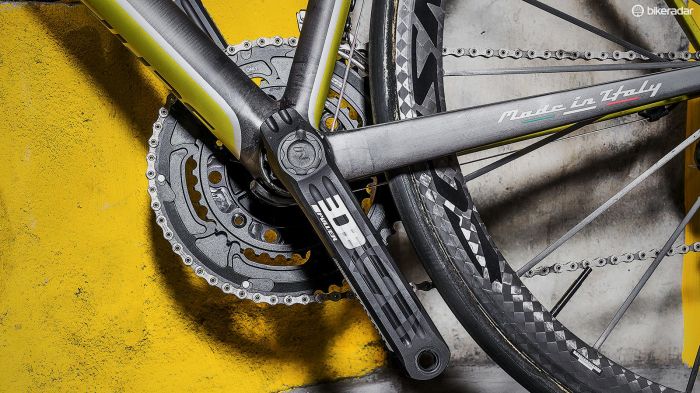You can trust Cyclingnews

This article originally appeared on BikeRadar
The last few years have seen huge steps forward in power-meter technology and a massive increase in the choice of power meters available to the non-professional cyclist. This has also helped to bring the cost down from their previous stratospheric levels.
Seemingly every month another new, supposedly innovative design appears — crank-based, wheel-based, shoe-based, one-side only, both sides — from well-known brands and Kickstarter-funded projects alike. The INpower is from the long-established Spanish company Rotor, which is best known for its non-round Q-Ring chainrings.
- Highs: Light, robust, affordable, accurate
- Lows: Limitations of left-only design, doesn't catch sprints well
- Buy if: You 're looking for an innovative and well-priced power metering solution, and are willing to accept single-sided limitations
The INpower is a fresh design approach for a power meter. While other crank-based power-measuring systems position the strain gauges in the crank arms or the spider, Rotor's INpower houses all the electronics in the crank axle.
Like a Stages power meter, the INpower only measures on the left side, then doubles that number for total wattage. However, housing the guts in the axle brings benefits: the weight is centred; the unit is protected from water, dirt and impact; there is room for a larger battery; and it allows a modular design that can be used with all of Rotor's existing cranks, including the aerodynamic Flow model. It weighs 574g without chainrings.
Sensibly, and following criticism of the previous left-sided model, the Power LT, Rotor offers the INpower as both a crankset and the left side on its own, so you can upgrade your existing Rotor crankset to INpower. There are other gains to usability too. The inexpensive and widely available AA battery lasts a claimed 300 hours (compared with the Power LT's much stingier 100 hours), you can swap it yourself in seconds without tools, and the cranks are now easier to remove thanks to a captive bolt. You can pair your INpower with any ANT+ compatible device.
Rotor will also soon have a dual-sided 2INpower meter for sale.
Rotor has also introduced its own software with new analysis tools for users of its own Q-Rings: Torque 360 and Optimum Chainring Angle. The first is a spin scan, the second guides your choice of Q-Ring mounting position. Of course, any such analysis is limited by only having view of one leg's work.
We found the INpower to be a big step up on from the soon-to-be-discontinued Power LT – which scored three out of five when we reviewed it earlier in 2016. It doesn't jump or drop out and it's fine at low cadences. We also found that it tracked very well with our PowerTap GS control and that it handled temperature changes, too, though it did take a while to adjust.
On the downside, like the older Power LT, the INpower under-reads sprint efforts. It does this consistently, so the numbers aren't useless, but if you're a road racer or compete in criteriums you may want more precision.
- Price: £500-750 / US$779-1139* / AU$ TBC